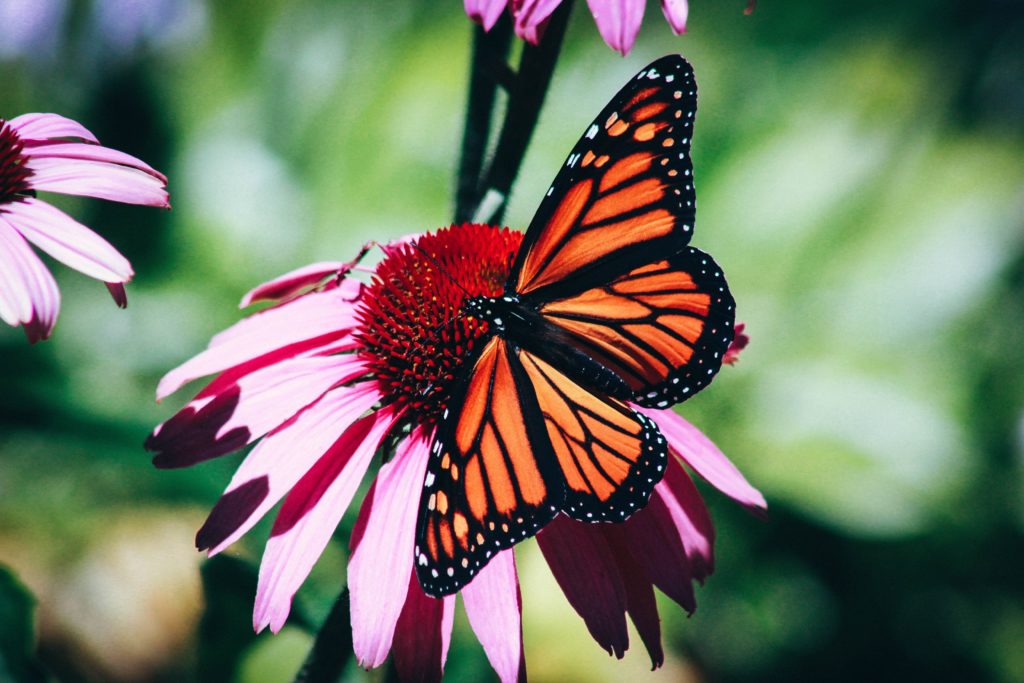If you’re anything like me, you’ve spent the last year donning your finest pajamas, scarfing snacks long after dinner, and spending maybe a little more time in a chair and at your computer. And, with the end of the pandemic in sight, you are probably feeling a powerful desire to reset. So take advantage of this moment of rebirth and transformation after a year that invited you to really question everything.
Or is all that just me?
Well, you’re still here reading, so I’m going with “I’m not alone” and that you share my desire to shake things up and take the best of what we’ve learned in this last year and use it to create something new — an existence more rooted in what is truly important to you.
BUT — there’s always a but, isn’t there? — there’s only one problem: Change. Is. Hard.
I’ll explain why it’s so hard in just a moment. But let me say up-front that while change is hard, it’s not impossible. But if you want to change, you’ll need to, well, change the way you approach it.T
And there’s also some good news in there: while truly affecting lasting transformation is an investment, it doesn’t have to be complex. In fact, there’s a super simple way to do it. But it’s probably going to sound counterintuitive to you.
But before we go there, let’s get into why changing is so very hard.

Why Transformation Is So Hard
You’ve heard it. I’ve heard it. EVERYONE’S heard it. Your thinking can re-wire your brain. Neurons that fire together wire together. Your thoughts alone will allow you to change anything you want in your life. If only it were truly that simple.
While there is verifiable power in positive thinking and affirmation, on their own, they run smack into a problem with how we think our brain works. We tend to think of it sort of like a sponge, always ready to take on something new. However, the harsher reality is that as adults, our brains are not very malleable at all.
So, if we want to transform ourselves, we’re going to have make our brains a bit more open to change by doing some work to nurture our brain’s soil and facilitate what is called neuroplasticity, or the malleability of our brain.
Despite what popular magazines may tell you unless you’re under twenty, it’s actually quite hard to make changes to the stuff between your ears.
We are born with thousands of neurotransmitters (wires, if you will) loosely floating around in our heads. That’s exciting because it gives us so many possibilities, but as we age, those neurons form neuropathways and, eventually, form into even more solid neurohighways.
Moreover, the space between those neuropathways reduces as well, filled in with glial cells. These special cells function like packing peanuts and make it harder for our brain to make new connections.
In short, as time goes by, we get more customized to meet our particular needs. But all that customization makes it harder for us to change.
This process is why cultivating and sustaining malleability in the form of brain plasticity is so critical! But malleability alone doesn’t enact transformation. That’s why we need to leverage a somewhat counterintuitive tool to create it: routine.
Leveraging a Routine to Drive Change
While you may think of a routine as something that you do when you’re trying not to change. In fact, it’s actually one of the most powerful tools you have to enact change.
In fact, it’s by cultivating a healthy routine that you can take that malleability and turn it into actionable transformation.
With a malleable brain, you can not only adopt new habituations, ideas, and concepts.. But you can also build a routine that serves your objectives. Just like our brains get customized over time, our routines can be deliberately customized to serve our purpose.
You get to decide what works and what doesn’t, and, in turn, you can cull away anything that doesn’t resonate with you and your intended purpose.
But beware. The problem with both routine and this neural culling are that you can fall into habits that don’t fulfill your purpose or lead you to the life you desire to live if you aren’t intentional.
However, the exciting news is that you can use this customization process to your advantage by making deliberate shifts to your routine to realize the change you seek.

Preparing for Tranformation
Are you starting to feel excited? You know the players, you know what’s going on inside your brain, and you now understand why all those past efforts to make a significant change in your life hit some speed bumps.
But if you are not a huge fan of sleep or can’t make time for it in your busy schedule (eye roll), you can also explore what is called non-sleep deep rest (NSDR, for short). In this practice, you’re basically putting yourself into a state of sensory deprivation (no music or sound, eyes closed, supine).
Yes, I am saying that naps are good! In fact, research has found that practicing NSDR for less than 90 minutes directly after learning was actually more effective for learning retention than even a solid night of sleep! Take that anti-nappers!
That said, not only does getting adequate shut-eye to protect and preserve your nervous system and brain function, but it’s during that 8 hours of rest that any neural circuitry that activates during the day gets strengthened. In other words, sleep is what really seals the deal when it comes to neuroplasticity and adaptability.
Reset Your Routine!
Now that you’ve prepared your brain for a change, you’re ready to get things moving by instituting a new routine that will rewire things to create the change you want in your life.
But before you either dive in (or maybe dismiss this as too simplistic), you need to understand what a routine actually is and how it works inside your brain — because there’s a good chance you have an incomplete picture of what’s going on.
A routine is an intentional series of micro-choices (or what we call activations), from brushing your teeth to meditating, to spending an hour learning a new language, that you repeat regularly.
Unlike habits, however, routines are NOT automatic. They require you to be intentional, deliberate, and disciplined. They take a consistent daily effort — and that’s the key to their power.
Routines are the key ingredients and building blocks that lead to sustainable and life-changing habits if you do them intentionally.
This is because a habit can take anywhere from 66 to around 300 days to form. This process means that you need a whole lot more than willpower to push through to make that habit stick. That’s where the routine kicks in. It provides a resource and roadmap for your prefrontal cortex. It takes out all the extra guesswork and prevents the emotional part of your brain (your limbic system) from taking over and engaging reactively.
So by making the intentional choice up-front and building it into a routine, you are essentially programming your brain with the change you want to see in your life.
However, as you probably know from experience, establishing a new routine is not as simple as it sounds. In fact, because using a routine to reset and power change is both so critical — and so challenging — we’ve actually created a free mini-program to walk you through the process step-by-step and help you accomplish it.

While Profound and Critical, the Steps Towards Transformation Are Actually Pretty Straightforward:
Recognize your purpose and what matters most to you. To adopt a routine that is truly transformative, you need to start with your why. How do you want to be remembered in your last days? What drives you to wake up each morning? These are challenging questions, so we created an exercise that we call The Obituary Test to help.
Take Inventory. With your purpose and the change you want to make clear in your mind, the next step is to inventory what you’re presently doing on a day-to-day basis. Now, I know that this is not a fun thing to do. But it’s important to be honest with yourself and note what you are actually doing on a day-to-day, hour-to-hour basis in your life. Doing an honest assessment and writing out how you fill your hours is the first essential step.
Make Room. After you’ve noted those three hours of Netflix you’ve been binging each night, you MAY decide that your steady diet of Schitt’s Creek is not exactly driving transformative shifts in your life. If so, it’s time to make some room by going through and cutting out any activities that are not aligned with the change you want to make.
Reset Your Routine. This is the most pivotal moment. Now that you’ve made some room, this is when you choose which activities you will adopt to shape and mold your new existence. This is the map to your new transformation! Be choosey here. This is not a place for comfort zones.
Chunk & Cue. There’s one last step — and it may be the most important. Part of why it’s hard to get new routines to stick and why, as a result, they don’t often lead to the change you seek is that things get in the way and knock you off-track. To prevent that, you should take the important parts of your new routine and group them in a series of “chunks.” Then, create a “cue” for each chunk that triggers you to perform it.
TAKE ACTION. Last but not least, your job is to put this new routine into action. Slap it on your refrigerator, plaster sticky notes all over your house. Do whatever you need to do to follow this new protocol. Yes, it may feel a bit like you’re micro-managing yourself for a while, but remember it will take as long as 300 days to cement your routine into a habit, so you need to make sure that you nurture these new practices. So they become second nature!
And don’t forget, you can always use our free Routine Reset mini-program to help you walk through this process step-by-step!
